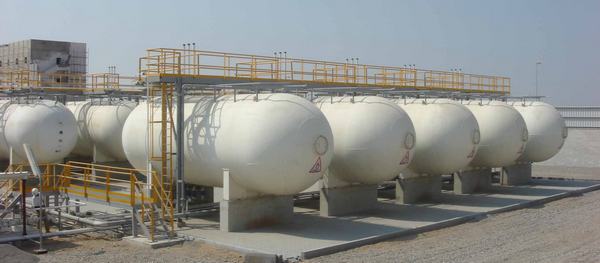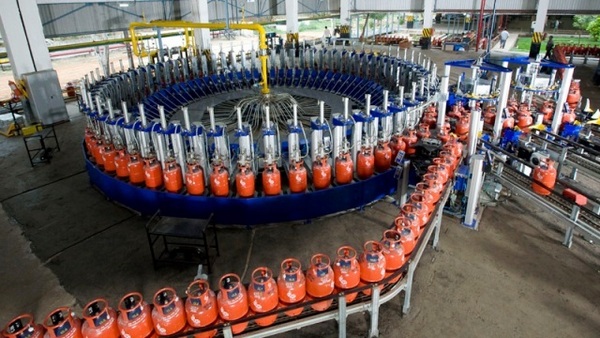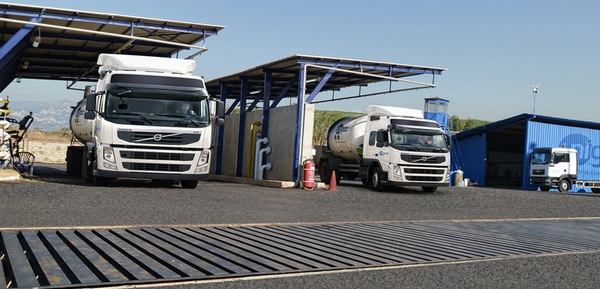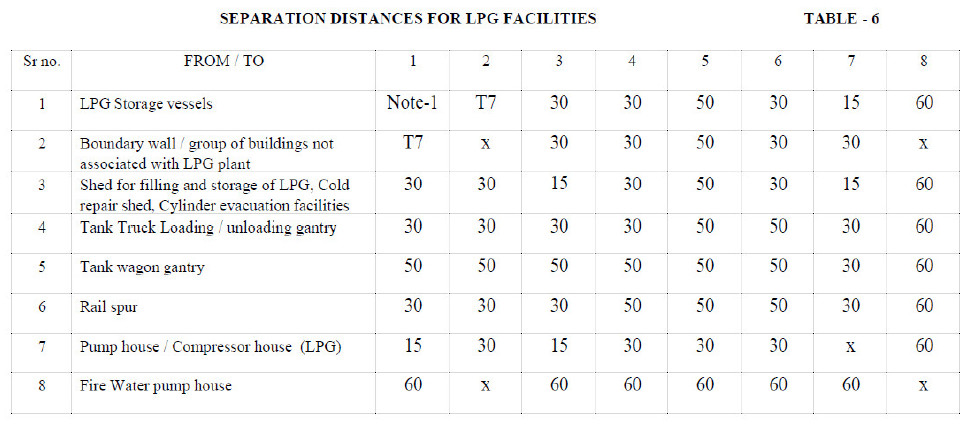The requirements given below are applicable to above ground LPG storage facilities. For mounded LPG storage, refer OISD-STD-150. Use protection berm for high pressure bullet tank near process tank.

- Vessels shall be arranged into groups each having a maximum of six vessels.
- Capacity of each group shall be limited to 15000 cum.
- Each group shall be provided with a curb wall.
- Any vessel in one group shall be separated from a vessel in another group by a minimum distance of 30 meters.
- Spheres and bullets shall be treated as separate groups with 30 meters separation distance between two groups.
- Longitudinal axes of horizontal vessels (Bullets) should not point towards other vessels, vital process equipments and control room.
- Storage vessels should be located down wind of process units, important buildings and facilities.
- LPG storage vessels shall not be located within the same dykes where other liquid hydrocarbons are stored.
- Storage vessels shall be laid out in single row both in case of the spheres and bullets.
- Storage vessels shall not be stacked one above the other.
- Spillage collection shallow sump shall be located at a distance where the flames from sump fire will not impinge on the vessel. This distance shall not be less than the diameter of the nearest vessel or 15 meters whichever is higher.
- The capacity of the collection sump shall be as per OISD-STD–144.
- Curb wall around the storage tank shall have a minimum height of 30cm. However it shall not exceed 60 cm at shallow sump position, as otherwise evaporation of spilled LPG may get affected.
LPG bottling facility

- LPG bottling facilities should be located at a safe distance from other facilities with minimum ingress to trucking traffic and downwind to storage.
- There shall not be any deep ditches in the surrounding area to avoid LPG settling.
- Stacking areas for empty and filled cylinders should be located separately.
- Cylinders shall be stacked vertically.
- Filling machines and testing facilities shall be organized in sequential manner distinctly in a separate area.
- Filled LPG cylinders shall not be stored in the vicinity of cylinders containing other gases or hazardous substances.
- Trucking traffic shall be smooth to avoid blocking/ obstruction for loading and unloading of cylinders.
Bulk handling facilities

- LPG truck loading/unloading gantry shall be located in a separate block and shall not be grouped with other petroleum products.
- Maximum number of LPG tank truck bays shall be restricted to 8 in one group.
- The bay should be designed in such a way that the driver’s cabin will be facing the exit direction and shall have no obstruction.
- LPG rail loading/unloading gantry shall be located on a separate rail spur and shall not be grouped with other petroleum products.
- Rail loading/unloading of LPG should be restricted to a maximum of half rake.
- Full rake loading / unloading is shall be done on two separate rail gantries having a minimum distance of 50m.
Separation distances for LPG facilities
- Minimum separation distances for above ground LPG facilities shall be as given in Table-6 & Table-7.
- For other details refer OISD-STD-144.
- For mounded LPG storage, refer OISD-STD- 150.


General Notes to Table 6 and Table 7
a) Table – 6 is applicable for total storage of above 100 Tonnes.
b) All distances are in meters.
c) “x” indicates suitable distance as per good engineering practices to meet construction, operational and maintenance requirements.
d) T7 indicates Table – 7.
e) Distance of stabling line shall be as per Railway Standard.
Specific Notes to Table – 6:
Note – 1: The distance shall be 2 meters or 1/4 of the sum of the diameters of the adjacent vessels or half the two adjacent vessels in the same group whichever is greater.
